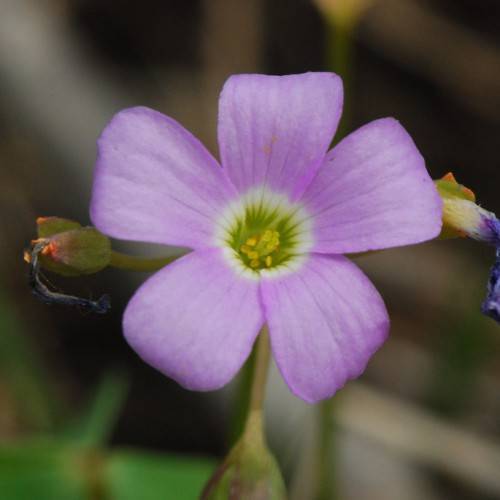
violet wood sorrel
Oxalis violacea
Cycle:
Herbaceous Perennial
Watering:
Average
Hardiness Zone:
5 - 9
Flowers:
Flowers In Spring
Sun:
Full sun,part shade
Leaf:
Yes
Growth Rate:
Low
Maintenance:
Low
Poisonous To Humans:
Yes
Poisonous To Pets:
Yes
Invasive:
Yes
Care Level:
Moderate
watering
Violet wood sorrel (Oxalis violacea) should be watered frequently but lightly to keep the soil consistently moist. During the growing season, water plants deeply once every 7 to 10 days, or more often if the soil becomes dry, to a level of 4 to 6 inches deep from the surface. In times of extreme heat and drought, plants may need supplemental watering to prevent wilting. When temperatures cool in the late fall, reduce the frequency of watering incrementally until you reach once a month or less in the winter. This allows the plant to go dormant while preventing it from drying out completely. Use care when watering to avoid wetting the foliage as moisture on the leaves may cause leaf spot and fungal problems.
sunlight
The violet wood sorrel (Oxalis violacea) is native to western North America and often prefers partial shade. It grows best in moist, well-draining soil and does best in bright, indirect light or filtered sunlight for 4 to 6 hours daily. In direct sunlight, the plant may suffer from sunburn or other conditions. The plant will also do well with light shade for the majority of the day. It is important to provide enough light for the plant to flower, which happens in late winter and early spring. In shadier spots, the plant may still produce foliage, but it is unlikely to bloom.
pruning
Violet Wood Sorrel (Oxalis violacea) should be pruned during the late winter or early spring when the plant is dormant. Pruning should be light in order to remove any dead, diseased, or damaged leaves, stems, or roots. To encourage a bushier appearance and promote new growth, pruning should be done to remove 1-third of the plant’s stem and leaf material, focusing especially on the oldest, woodiest stems. This will allow more light to reach the inner sections of the plant and help to prevent the addition of too much fertilizer. Pruning should be done with sharp, clean clippers for the best results.
